Few artists are as innately interesting to children as Pablo Picasso. With the use of bright colors and geometric renderings of humans and objects in his art, Picasso instills a sense of curiosity that naturally draws children in and engages their curiosity.
Discuss Picasso’s life and art with your students using our free Picasso Classroom Slideshow. This is a great option for virtual teaching as well as in person – simply insert it into a slide show or send it to students through your virtual teaching portal.
Download our free Picasso Classroom Slideshow below.

ABOUT PABLO PICASSO
Pablo Picasso was born on October 25th, 1881 in Spain. He was a talented young painter who primarily focused on a realistic representation of his subjects. As he grew older, he moved to France and became inspired by fellow artists and art from different places, such as sculptures and masks from Africa.
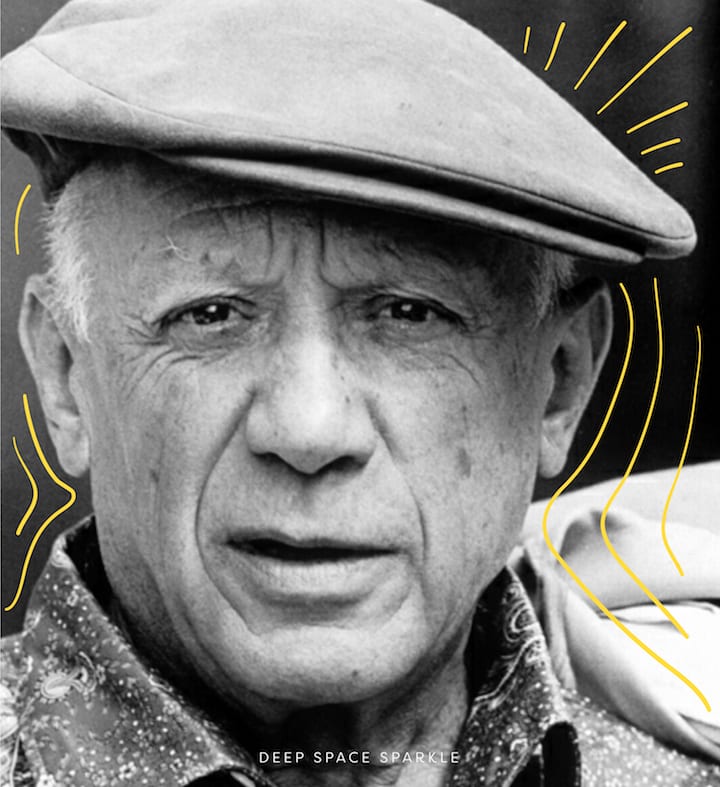
This is when he developed many of the art movements he was most famous for, like Cubism.
Picasso focused on breaking down his subjects into geometric shapes, then reassembling the pieces, which looked like a mixed-up puzzle.
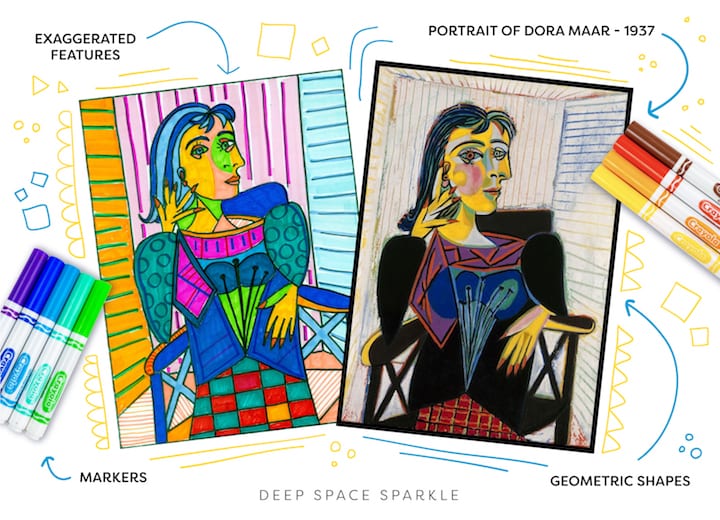
Picasso was one of the founders of the Cubist art movement, which is considered one of the most influential art movements of the 20th century.
INTRODUCING YOUR STUDENTS TO PICASSO
If you’ve been following Deep Space Sparkle for any length of time, you know we love a good children’s book – it’s almost always our go-to for introducing an artist or lesson. Here are a few of our favorite books about Picasso:
“When Picasso Met Mootisse” by Nina Laden
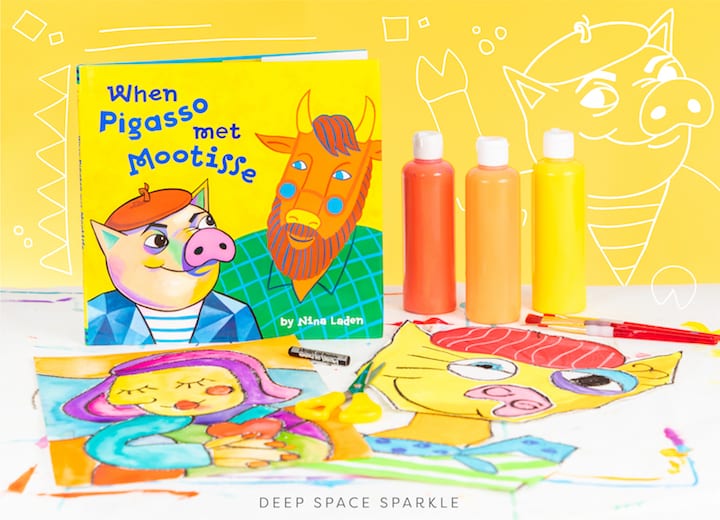
“Picasso and the Girl with the Ponytail” by Laurence Anholt
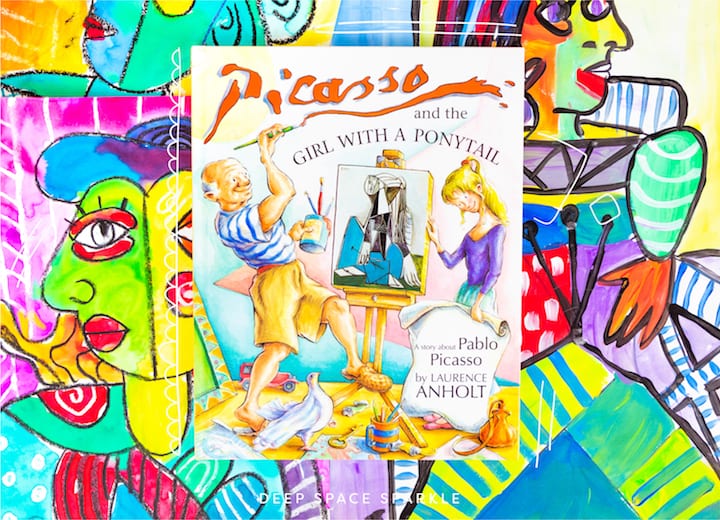
Both books introduce Picasso’s life and are a great segue into art projects. Here are a few:
Picasso Faces
It’s hard to have a well-rounded art program without including a Picasso Faces art project. Kids love creating this abstract portrait because there is no correct method and the possibilities are endless.
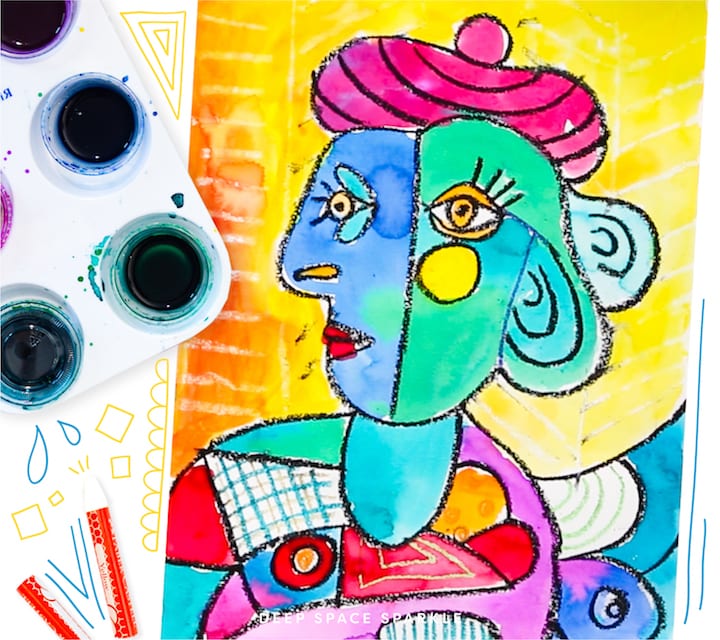
Picasso is a great artist to introduce using minimal supplies like crayons, markers and simple pan watercolors. Since most of his artwork is characterized bu shapes, anything that makes a strong outline is a great place to start. Try using a Sharpie, a black oil pastel or a black crayon.
Blue and Rose Period Projects
Collage and paper weaving also lend well to Picasso. With the sharp, angular shapes of his Three Musicians artwork, children love assembling papers to achieve shapes. You can use scrap paper from the recycle bin to create unique textures and colors. If students are creating virtually, using junk mail or magazines is a great option.
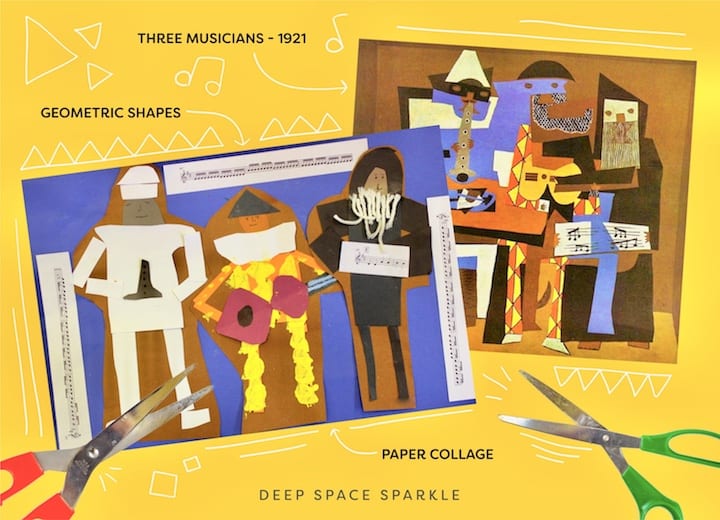
If you have access to colored papers, weaving strips of blue or rose colored papers is a great way to chat about Picasso’s Blue and Rose Periods. This Woven Hearts project is doable for any age group – especially 6 and 7 year olds as they learn how to weave.
Cubism Projects for Kids
A departure from his more famous works of art, Le Coq is basically a cubist rooster. Kids have great fun creating their own cubist rooster filled with line, color and pattern.
This Le Coq project has a huge success with 4th and 5th grade classes. It’s surprisingly easy when you do a guided drawing of the basic rooster shape, encouraging kids to express themselves with color and line.
PICASSO ART BUNDLE
You’ve no doubt seen an abundance of Picasso lessons online, but how do you pick the right one for your students?
Visit our shop to download the Picasso Bundle, which features six kid-tested, full length lesson plans inspired by Pablo Picasso.
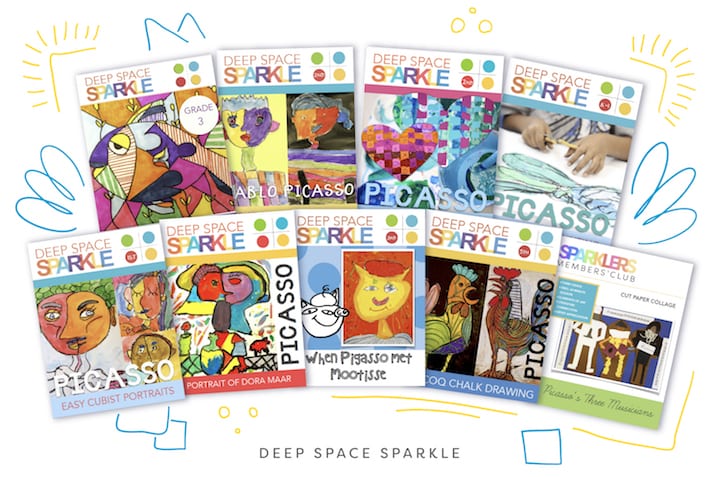
The bundle includes lessons on Cubism, as well as Picasso’s Blue and Rose Periods, a video lesson, perfect for virtual teaching, as well as an artist poster and worksheet.
There are endless ways to celebrate an artist as inspirational as Picasso. I hope you take the time to share his influence with your students this month.
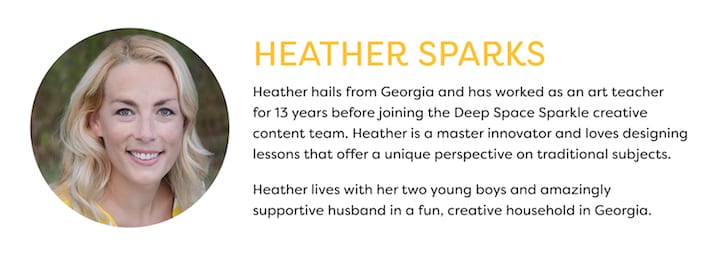
Written by Heather Sparks – Creative Content Developer at Deep Space Sparkle
*This post contains affiliate links. As an Amazon Associate I earn from qualifying purchases.














Muito bom!